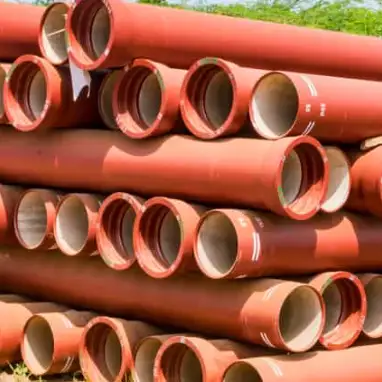Ductile iron pipes are a modern evolution of traditional cast iron pipes, offering enhanced strength, flexibility, and durability. They are widely used in water distribution systems, sewage networks, and other infrastructure projects. The 20-inch diameter is a common size for medium to large-scale applications, balancing flow capacity and structural integrity.

1. Technical Specifications and Standards
20-inch ductile iron pipes typically adhere to standards such as:
-
Pressure Class: Class 52 ductile iron pipe, Class 250 ductile iron pipe, etc.
-
Wall Thickness: Varies based on pressure class and application.
-
Joint Types: Push-on, mechanical, restrained, etc.
-
Coatings: Cement lining, bituminous coating, zinc coating, etc.
These specifications ensure the pipes meet the necessary strength and corrosion resistance for their intended use.
2. Factors Influencing Pricing
Several factors contribute to the pricing of 20-inch ductile iron pipes:
-
Material Costs: Fluctuations in the prices of raw materials like iron and alloying elements.
-
Manufacturing Processes: Advanced casting and coating techniques can increase production costs.
-
Transportation: Shipping costs, especially for international orders, can significantly impact final prices.
-
Market Demand: High demand in certain regions or projects can drive prices up.
3. Regional Price Variations
Prices for 20-inch ductile iron pipes can vary based on location due to factors like local manufacturing capabilities and transportation costs. For instance:
-
United States: Prices range from $112 to $145 per foot, depending on specifications and supplier.
-
China: Prices range from $425 to $720 per meter, influenced by local manufacturing capabilities and demand.
4. Comparative Analysis: Ductile Iron vs. Other Materials
| Property | Ductile Iron | PVC | Steel |
|---|---|---|---|
| Strength | High | Moderate | Very High |
| Flexibility | High | Low | Moderate |
| Corrosion Resistance | Good | Excellent | Poor |
| Cost | Moderate | Low | High |
Ductile iron offers a balance between strength and cost, making it suitable for many applications.
5. Applications of 20-Inch Ductile Iron Pipes
These pipes are commonly used in:
-
Water Distribution Systems: Transporting potable water across municipalities.
-
Sewer Systems: Handling wastewater and stormwater.
-
Industrial Applications: Conveying chemicals, slurries, or other materials.
6. Installation and Maintenance Considerations
Proper installation and regular maintenance are crucial for the longevity of ductile iron pipes. Considerations include:
-
Installation Depth: Ensuring pipes are buried at appropriate depths to prevent damage.
-
Joint Integrity: Regular inspection of joints to prevent leaks.
-
Corrosion Protection: Applying coatings and cathodic protection systems.
7. Market Trends and Future Outlook
The demand for ductile iron pipes is expected to grow due to urbanization and infrastructure development. Advancements in manufacturing technologies may lead to cost reductions, while environmental concerns could drive the adoption of more sustainable materials.
8. Frequently Asked Questions (FAQs)
Q1: What is the typical cost of a 20-inch ductile iron pipe?
The cost varies based on specifications and supplier. Generally, prices range from $112 to $145 per foot in the United States.
Q2: How does ductile iron compare to PVC in terms of durability?
Ductile iron offers higher strength and flexibility compared to PVC, making it more suitable for high-pressure applications and areas with seismic activity.
Q3: Can ductile iron pipes be used for both water and sewage systems?
Yes, ductile iron pipes are versatile and can be used for both potable water distribution and sewage systems, provided they meet the necessary specifications.
Q4: What are the common joint types for 20-inch ductile iron pipes?
Common joint types include push-on, mechanical, and restrained joints, each offering different levels of sealing and flexibility.
Q5: Are there any environmental concerns with ductile iron pipes?
While ductile iron is durable and recyclable, the manufacturing process can have environmental impacts. However, advancements in technology are helping to mitigate these effects.
Q6: What is the expected lifespan of a 20-inch ductile iron pipe?
With proper installation and maintenance, ductile iron pipes can last over 100 years, making them a long-term investment for infrastructure projects.
